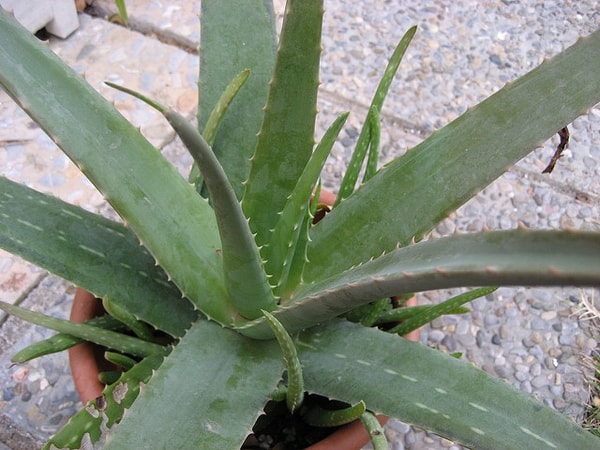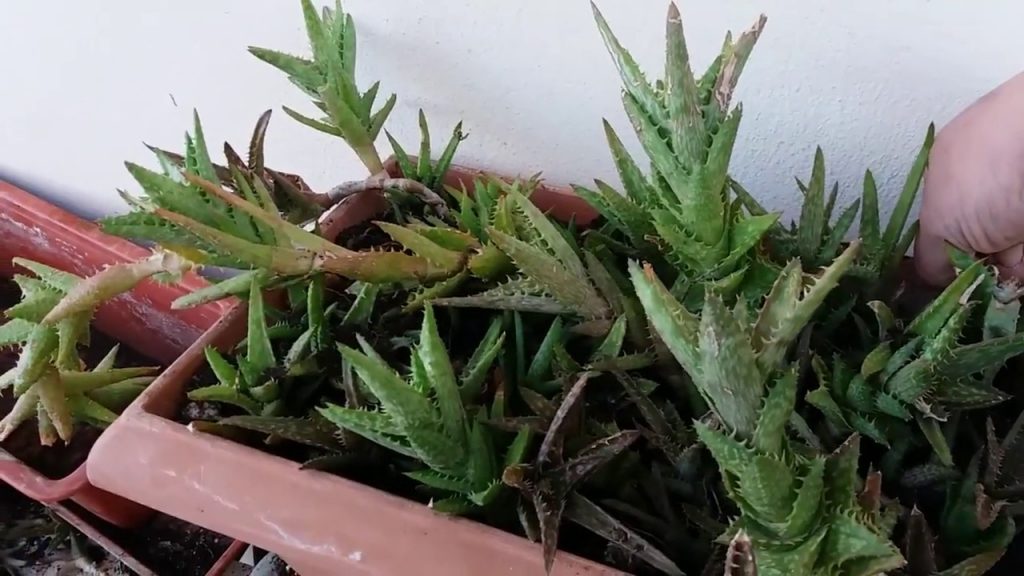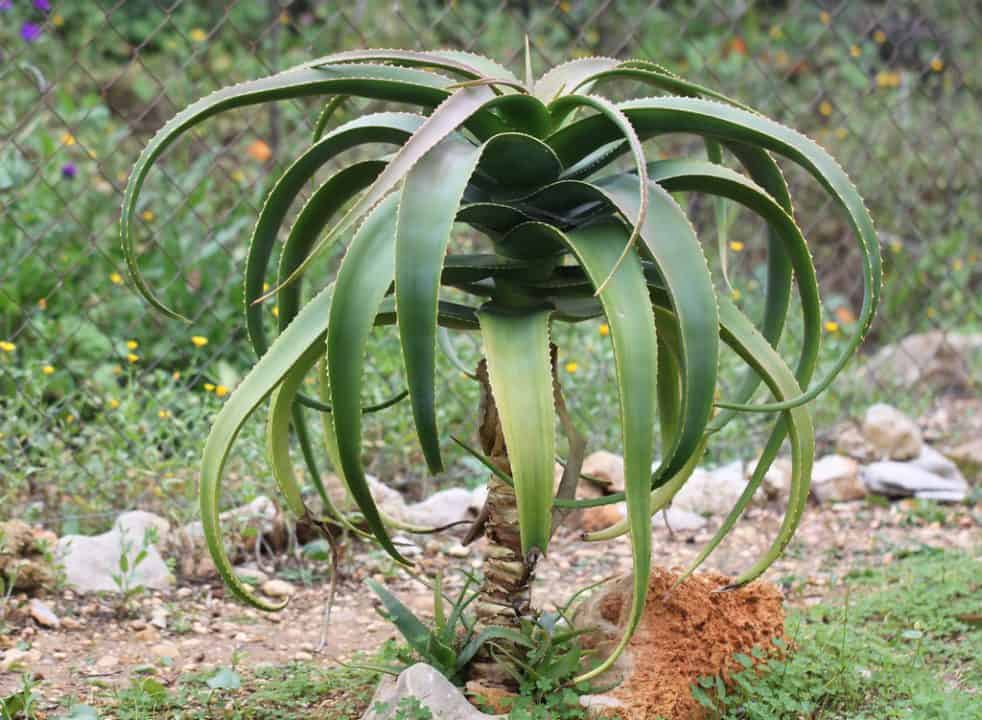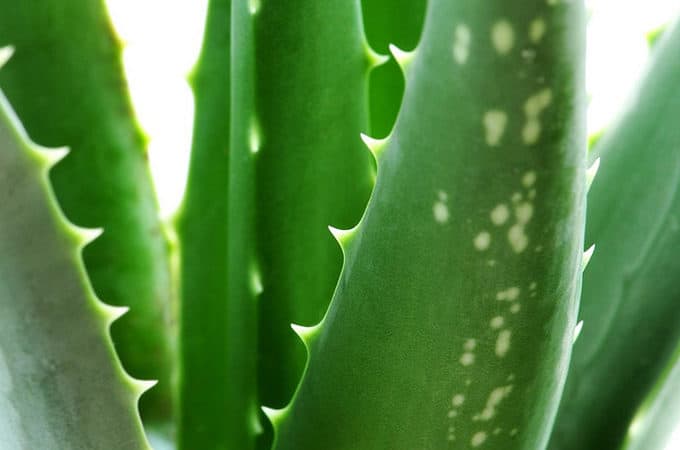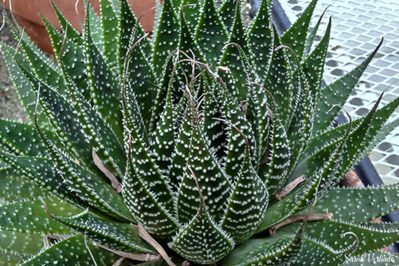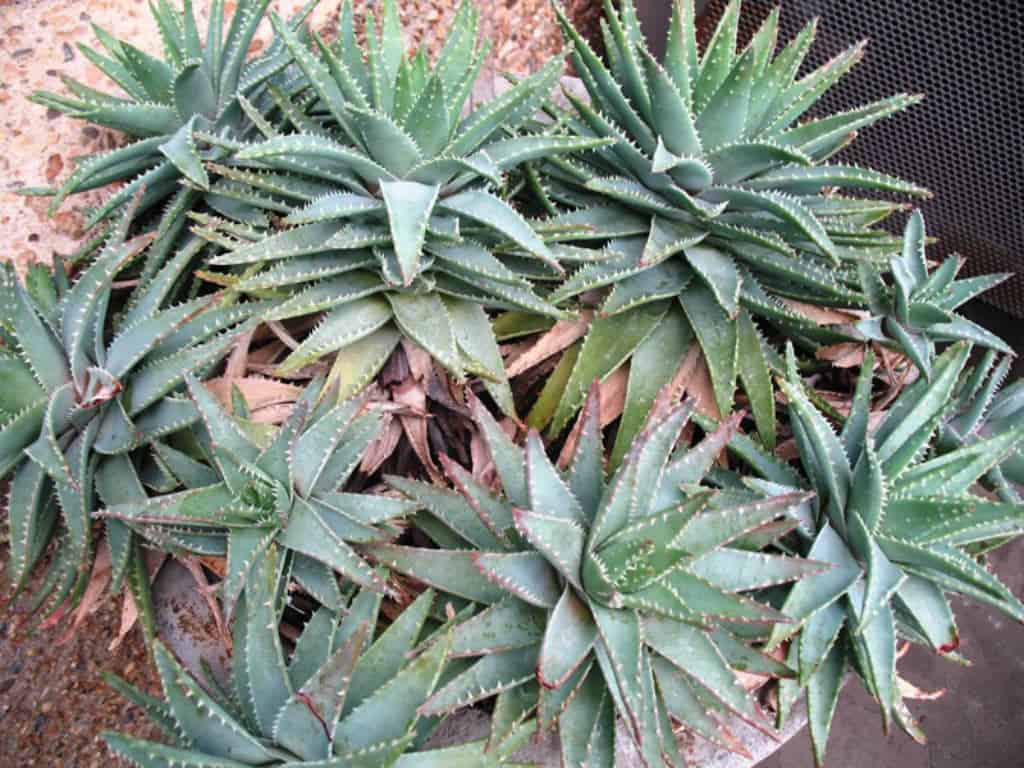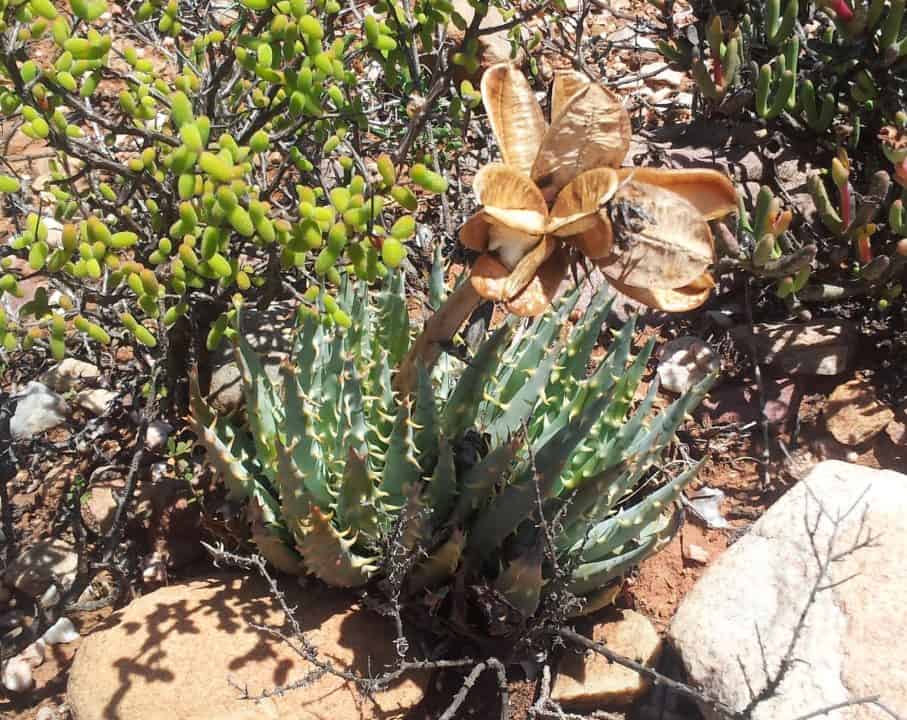Aloe barbadensis, also known as aloe vera, is one of the most popular types of aloe in the world. Since this succulent plant originates from the deserts of Africa and parts of Asia, it’s adapted to grow in low-humidity environments with high temperatures and little water.
All three types of aloe are used medicinally to treat burns, minor cuts and scrapes, skin inflammation, constipation, and other ailments, but aloe barbadensis has additional uses that make it valuable in the home garden as well.
Aloe barbadensis plants thrive when they are cared for properly, and this takes more than just watering the plant once or twice a week!
Aloe vera is one of the most common varieties of aloe in the world due to its many medicinal uses and excellent growth habits. They also make excellent potted plants that can be enjoyed indoors or out, but knowing how to care for your aloe and propagate new plants ensures you’ll have this plant around as long as you need it!
Here are some tips on how to care for Aloe barbadensis plants in your home.
Origin and distribution
Aloe barbadensis is native to western tropical Africa, but it is now cultivated throughout warm areas of Europe and North America. It has been naturalized in Australia, Japan, New Zealand, and elsewhere. In colder climates, aloes are typically grown as houseplants or in greenhouses.
Aloes can be difficult to grow indoors because of their need for adequate light and heat; during cool weather, they may drop their leaves.
Because aloe barbadensis plants are not long-lived, people who grow them often treat them as annuals and replace them every few years. When you propagate a new plant from an old one, take a small cutting rather than a large piece with multiple leaves.
Make sure your cutting comes from a healthy parent plant that’s free of pests and disease.
Aloe barbadensis propagation
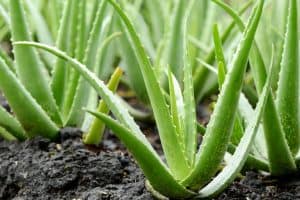
Grown indoors in pots, Aloe barbadensis is easily propagated by cuttings. Use a sharp knife to take a 10-15 cm cutting with healthy leaves from an established plant. Place 3 or 4 inches of potting soil in your container and put it in a bright window where it gets full sun.
Water when soil is dry; not allowing it to become soggy. If you can keep your aloe growing for about 3 months you will notice new shoots emerging from your rooted cutting.
Once they are 5-10 cm long they are ready to be planted into their own containers. It may take several years before your cutting takes off on its own but eventually, you’ll have more plants than you know what to do with!
For those that live in cold climates, leave your cuttings outside over winter. The following spring places them on a sunny windowsill until new growth emerges and then transplant them outdoors after all danger of frost has passed.
Aloe barbadensis can also be propagated from seeds, just purchase some seeds online or at your local nursery. Keep them moist and warm until they sprout, which can take up to 2 weeks. Plant them in a pot with good drainage, using a well-draining soil mix such as cactus mix.
Water when soil is dry; not allowing it to become soggy. When new growth emerges, move outdoors where it will get plenty of sun. You can also try planting them directly into your garden after all danger of frost has passed but be sure to protect them over winter by covering them with mulch.
While keeping an eye on your young plants, remember that aloe vera likes hot temperatures and lots of sunlight!
Aloe vera plant care information
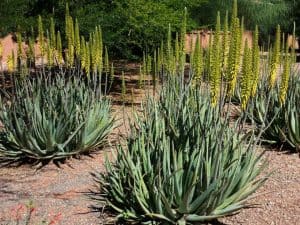
Aloe barbadensis plants are relatively low-maintenance as far as houseplants go. Still, these succulents require some special attention and care to ensure their health and longevity. The information below is applicable to most species of aloe.
Some exceptions may apply; be sure to do your research before caring for your specific plant! For example, certain varieties of aloe can be grown outside in warm climates. But many types will thrive indoors in full sun or partial shade year-round.
Light requirement
Aloe barbadensis do best in full sun to partial shade. They are hardy plants, able to withstand drought and survive under conditions of less than ideal-rainfall. However, too much shade or inadequate water will result in stunted growth and smaller leaves.
Place them where they’ll receive as much sunlight as possible throughout your region’s growing season. Also, keep in mind that some aloes produce flowers only when exposed to at least six hours of direct sunlight each day.
Soil/potting mix
Make sure your Aloe barbadensis is planted in soil that’s fertile, loamy, and well-draining. Avoid soils high in peat moss or other organic material; these tend to be dense and can hold too much water. You should also steer clear of container mixes that are high in perlite since perlite holds a lot of water and doesn’t let it drain easily.
A good potting mix for succulents and cacti has about 40 percent sand, 40 percent pumice (volcanic rock), 20 percent composted bark or rotted manure, and 10 percent sphagnum peat moss.
This will allow for plenty of drainages while still retaining moisture. If you don’t have access to an ideal potting mix, make your own by combining equal parts garden soil with perlite and vermiculite.
Watering
Aloe barbadensis does best when watered regularly and heavily. This will ensure that its root system is healthy and strong, which in turn will keep your aloe happy throughout its lifetime.
A lack of or too much water can lead to root rot, so make sure you’re watering it properly. You should also make sure that your plant doesn’t sit in water for long periods of time after watering – let it drain a bit before putting it back on display in your home or office.
Fertilizer
If you’re potting aloe vera in soil, balanced, water-soluble fertilizer such as 20-20-20 is fine. Fertilize every two weeks and adjust according to your plant’s condition. Your plant can tell you when it needs more: if new leaves are brown or yellowing, your aloe vera isn’t getting enough nutrients.
Also, don’t fertilize during the hot summer months; aloe vera plants will grow better with less fertilizer in high heat.
Temperature
Aloe barbadensis prefers to live in hot climates. Their optimal temperature range is between 75 to 85 degrees Fahrenheit (24 to 29 degrees Celsius). The aloe’s leaves and roots can tolerate temperatures up to about 100 degrees Fahrenheit (38 degrees Celsius), but their ideal temperature is much closer to that of humans.
To meet your plant’s needs, consider buying a grow light for indoor planting or installing an outdoor heating lamp. This will ensure that your plant does not freeze or get too hot during its winter months.
Humidity
Aloe vera plants thrive in areas of high humidity; placing them in warm, wet environments increases their chance of rotting. Too much sun exposure and drying winds are also harmful to Aloe plants. To maintain your plant’s health, keep it in a humid environment with indirect sunlight, such as near a window. Mist with water every two days or so.
The ideal humidity range is 60 to 80 percent. This can be achieved by placing your plant on a water-filled saucer or in a room with a humidifier. The leaves of an Aloe plant should never become dry, shriveled or brown.
If they do, your plant needs more water. If your Aloe’s leaves are yellowing and dropping off, it may be receiving too much light or not enough water.
Pruning Aloe barbadensis
Proper pruning is important to maintain a healthy Aloe barbadensis plant. Plants with too few leaves or that have been cut back hard can be stressed and are more susceptible to insect problems and diseases. The best time to prune aloes is in late summer or early fall before new growth emerges in spring.
Prune by cutting off stems just above a leaf node (the small bumps where leaves emerge). Cutting off leaves is not recommended since they have no ability to re-grow.
When to repot
Aloe barbadensis, also known as Aloe vera, is a flowering succulent plant grown for its leaves. They are long and lance-shaped with serrated edges. They range in color from green to yellowish-green and are often dotted with dark spots or streaks.
The part of an aloe leaf that is most widely used medicinally is its inner mucilaginous gel contained in small transparent capsules within each leaf’s skin.
Dormancy
Aloes are adapted to arid climates, but they can be overwintered in a greenhouse or other relatively frost-free environment. Aloes go dormant in winter and spring, and although their leaves fall off during dormancy, most aloes will leaf out again when warmer weather returns.
It is important to keep aloes from entering dormancy by keeping them well watered throughout autumn and early winter. Cold temperatures will prevent an aloe from forming its usual new rosette of leaves in spring.
Flowers & fragrance
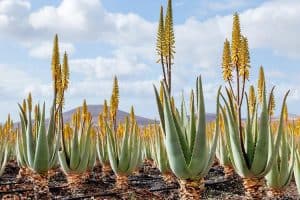
Once mature, aloe barbadensis can begin producing flowers. In general, these open in mid-afternoon and release a very fragrant scent. The petals are yellow-orange with maroon speckles, giving them a very vibrant coloration.
These plants do not self-pollinate and need another specimen nearby for cross-pollination to occur; keeping your plant in close proximity to one or more others will ensure healthy blooms year after year.
Aloe vera growth rate
Aloe barbadensis, commonly known as aloe vera, is a slow-growing succulent plant. Since it can take years for an aloe plant to bloom and reproduce, most gardeners want to grow their plants from cuttings instead of seeds.
When you propagate aloe veras by cutting, you can ensure that your new plants will share your mother plant’s hardiness and health. Just be sure to follow the tips for healthy growth.
Toxicity
Aloe plant toxicity is a rare occurrence but still something to keep in mind if you have young children or pets. Although there are no known cases of aloe causing health problems, people with allergies to latex should probably steer clear.
It’s also best to avoid eating any parts of an aloe plant, as one part of its scientific name—aloin—indicates that it is commonly used as a laxative and purgative in some cultures.
USDA Hardiness Zones
Aloe barbadensis will thrive in USDA hardiness zones 10 and 11. In other areas, it can be grown as a houseplant. If you live in a colder climate, aloe can be grown outdoors if it is planted in an area that receives full sun and protection from cold winds.
While aloe does not require a lot of water, it does need to be watered regularly during hot weather. The soil should never dry out completely, but should also not remain wet for long periods of time.
Pests and diseases
The most common pests affecting Aloe barbadensis plants are spider mites and aphids. Aloes that do not get enough light, have too much water or fertilizer, or are crowded together in a pot will be more susceptible to pest and disease infestations. Spider mites are tiny arachnids that suck sap from plants, causing yellow spots on leaves and leaf drops.
Conclusion
When grown in ideal conditions, Aloe barbadensis (aloe vera) plants can be relatively easy to take care of. They are susceptible to root rot and over-watering, however, so you need to make sure that your plant’s soil drains well and its roots aren’t constantly wet.
It may take a few weeks for your plant to acclimate itself; allow it plenty of time before watering again after you transplant it into your garden or pot.
